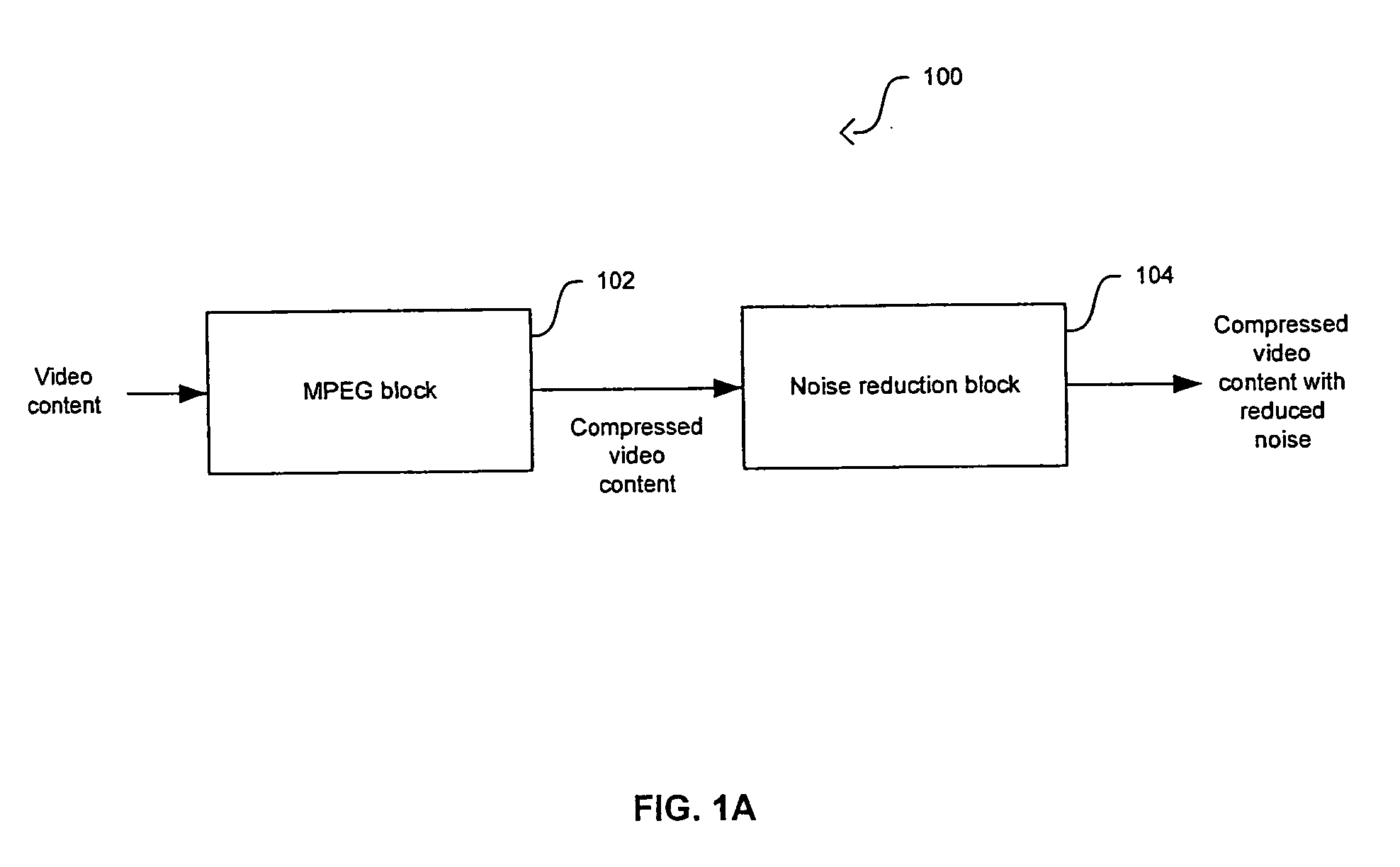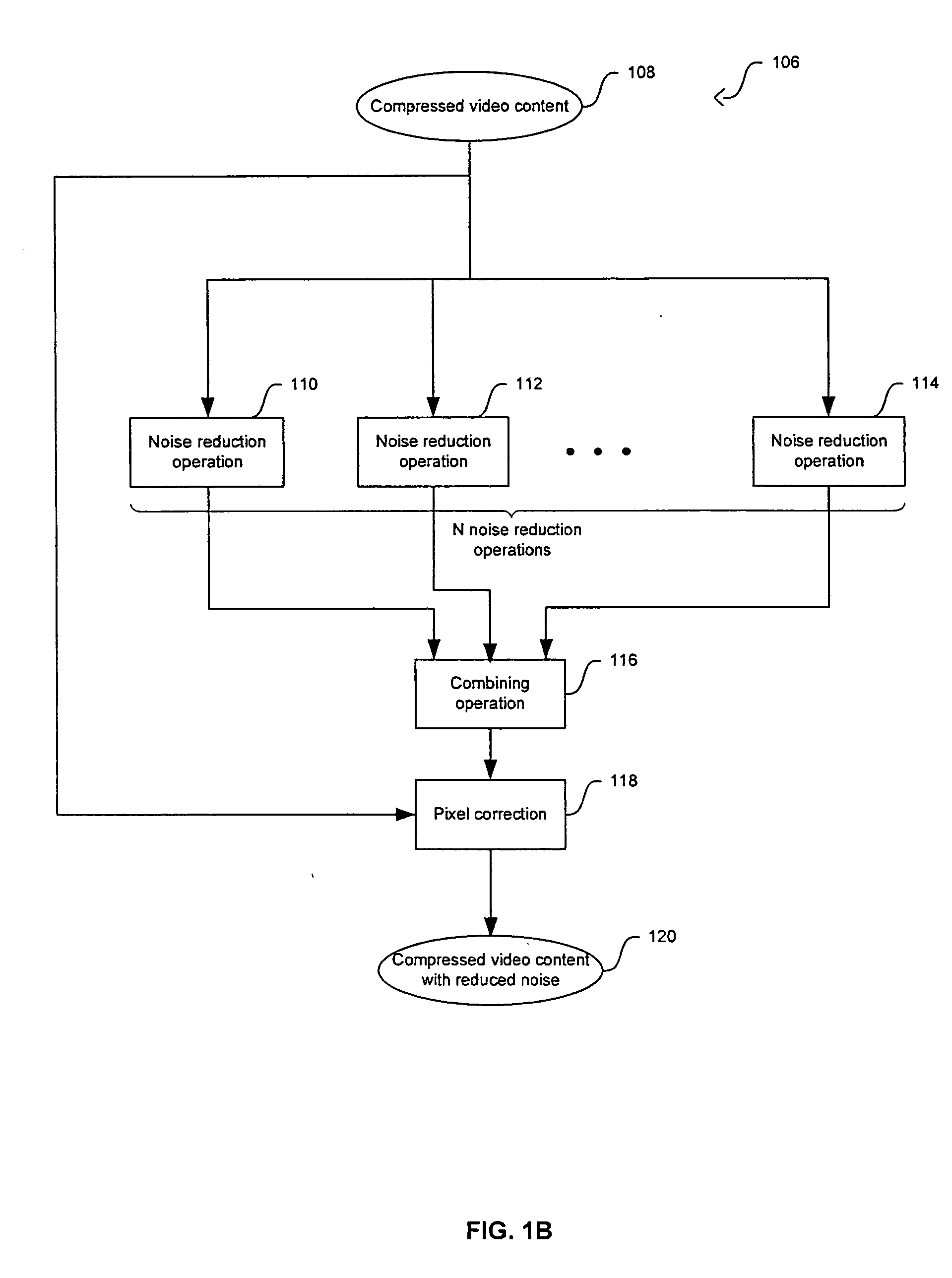Method and system for combining results of mosquito noise reduction and block noise reduction
a technology of mosquito noise reduction and noise reduction, applied in the field of video processing, can solve the problems of affecting the quality of video content, and affecting the effect of noise reduction, so as to reduce the noise artifacts
- Summary
- Abstract
- Description
- Claims
- Application Information
AI Technical Summary
Benefits of technology
Problems solved by technology
Method used
Image
Examples
Embodiment Construction
[0044] Certain embodiments of the invention may be found in a method and system for combining results of mosquito noise reduction and block noise reduction. Noise artifacts may be reduced in a video image by generating a first pixel correction value that combines a first and a second noise reduction parameters utilizing a first combination operation. Combining the first pixel correction value and a third noise reduction parameter utilizing a second combination operation may generate a second pixel correction value. New pixel values may be determined for the video image by adding an original pixel value and the pixel correction value. The noise reduction parameters may correspond to results from mosquito and block noise reduction operations. The first and second combination operations may be selected to be a maximum, a minimum, or an addition of the input parameters based on the sign of the input parameters. Note that the following discussion will generally use the terms “image” and ...
PUM
 Login to View More
Login to View More Abstract
Description
Claims
Application Information
 Login to View More
Login to View More - R&D
- Intellectual Property
- Life Sciences
- Materials
- Tech Scout
- Unparalleled Data Quality
- Higher Quality Content
- 60% Fewer Hallucinations
Browse by: Latest US Patents, China's latest patents, Technical Efficacy Thesaurus, Application Domain, Technology Topic, Popular Technical Reports.
© 2025 PatSnap. All rights reserved.Legal|Privacy policy|Modern Slavery Act Transparency Statement|Sitemap|About US| Contact US: help@patsnap.com



